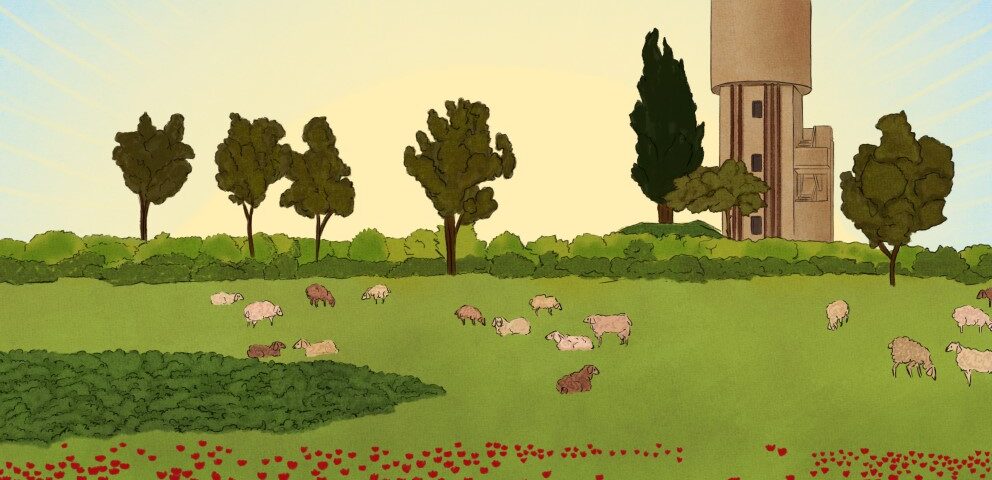Alt+SHIFT: One Day in October

Alt+SHIFT is the keyboard shortcut allowing us quick transition between input languages on our keyboards—for many readers of TRADITION that’s the move from Hebrew to English (and back again). Yitzchak Blau offers this supplemental entry in this Tradition Online series offering his insider’s look into trends, ideas, and writings in the Israeli Religious Zionist world helping readers from the Anglo sphere to Alt+SHIFT and gain insight into worthwhile material available only in Hebrew. See the archive of all columns in this series.

Cover of the soon-to-be-released English edition of “Yom Ehad be-Oktober”
Yair Agmon and Oriyah Mevorach, Yom Ehad be-Oktober: Arbaim Giborim, Arbaim Sippurim (Maggid Books), 326 pages
Yom Ehad be-Oktober is a powerful collection of forty stories from October 7th that inspires and depresses, fills the reader with hope, as it makes him or her cry. A team interviewed individuals with stories from the Hamas massacre and Yair Agmon and Oriyah Mevorach skillfully transformed those accounts into narrative chapters which will serve as a “first draft” in documenting the stories of Simhat Torah 5784. The editors did a good job of selecting a diversity of tales both in terms of disparate voices and varying kinds of involvement in the events of that terrible day.
As expected, in this Hebrew collection we encounter episodes of heroism on the battlefield but also discover heroes who drove those fleeing to safety, a nurse who tended the wounded in her home while terrorists roamed outside, ZAKA staff who prepared desecrated bodies to provide a dignified burial, a grandfather who sat on a couch waiting for Hamas to kill him while distracting them from those in the safe room, and, perhaps most powerfully of all, a woman (Iris Hayim) forgiving the I.D.F. soldiers who through a case of mistaken identity killed her captive son while in Gaza.
One category of narrators includes children. We hear from two teenagers (Gali Ayalon and Hadar Bacher) who were in the fray, another teenager (Paulina Belenky) who lost a father in Sederot, and from nine-year-old Emily Hand. Emily’s father experienced the emotional roller coaster of his daughter being missing, presumed dead, missing again, alive in captivity, and finally released to freedom.
[See table of contents and sample pages. I read the book in the Hebrew original — it will be released in the coming months in an English translation and is available for pre-order now.]
Four stories involve those who grew up in the Haredi orbit including two who left religion (the Sharabi brothers and Yakov Karsinski), a Haredi “lite” who drove their ambulance and saved many from Kfar Aza, Sderot and Yakhini, and a member of ZAKA named Yossi Landau who expresses the trauma those emergency workers still struggle with after seeing mutilated victims of the kibbutzim.
Some of the most potent episodes involve non-Jews. There is a Bedouin driver (Yosef Alziadna) who saved many from the Nova festival, a Druze woman (Nasreen Yosef) who extracted important information from a captured terrorist, a Druze paramedic (Awad Darawshe who lost his life while tending to the wounded at the festival, and a Philippine caregiver (Camille Jesalva) who bribed a terrorist to leave her 95-year-old charge alone. Remarkably, this woman canceled a planned trip back home to the Philippines after the incident because she thought that her employer, Nitza, needed her around.
The volume displays women making an impact on the battlefield. Ori Livni Ben-Yehuda came to help defend the military post in Kibbutz Sufa; Moran Tadgi is a policewoman who participated in the battles in Sederot; and Shay Ashram was a lookout on the Gaza border whose warnings of imminent Hamas activity were tragically ignored. Reading such accounts makes it harder to argue that women have no place in the world of combat.
Some stories end with everyone surviving while others end in death and loss, yet fallout remains in both categories. Yossi Landau feels that he cannot hug his grandchildren lest he somehow infect them with the horrors he witnessed. Shay Ashram’s father is naturally angry with those higher-ups in the army who did not take his deceased daughter’s warnings seriously. The parents of Awad Darawshe are still waiting for their son to communicate with them in a dream, and Ido Hirsch’s father talks about the disturbing quiet in his home on Shabbatot brought about by his son’s absence.
As many have noted, the government apparatus failed whereas individual citizens showed great courage and resolve. Our intelligence services did not pick up on crucial clues and the army took about seven hours to mobilize after the assault began. On the other hand, policemen and civilians heroically took on hundreds of terrorists before the army arrived. Many headed south to help without having received an army directive. The Slotky brothers from Beer Sheva did so and both were killed in Alumim.
My reading of Yom Ehad be-Oktober provided a number of takeaway messages. Rami Davidian, having seen what truly matters, can no longer understand how people argue about trivialities. Shay Ashram’s father says it does not pay to think about how, if his daughter had agreed to go to officer’s course, then she would not have been on the border on that fateful day. However, rational knowledge of this fact does not prevent us from thinking such thoughts. Finally, Miriam Elazari says that her son was not a perfect “storybook hero.” Her impressive candor highlights a significant point. In times of crisis, heroism comes from all kinds of people and this volume opens a window into forty such heroes.
Yitzchak Blau, Rosh Yeshivat Orayta in Jerusalem’s Old City, is an Associate Editor of TRADITION.
